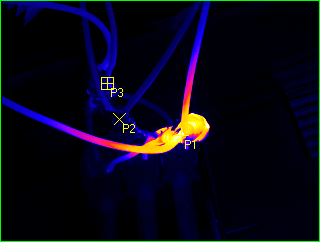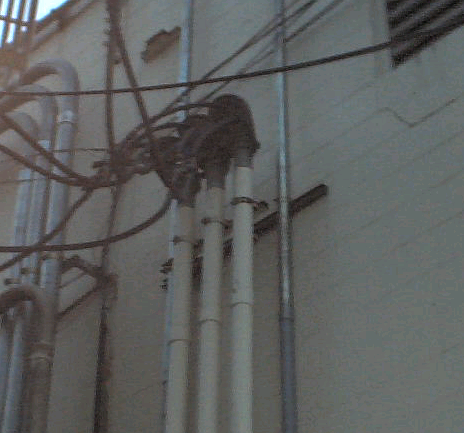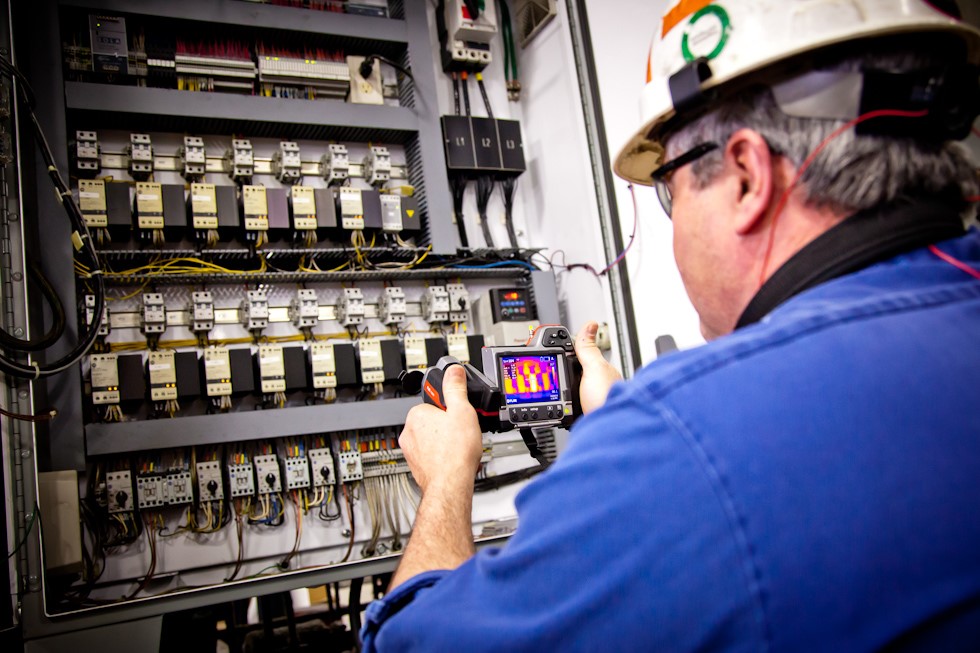We, Business Engineering Solutions & Technology (B.E.S.T) provide Thermographic inspection services for mechanical & electrical equipment. A non-intrusive predictive maintenance tool, infrared thermographic imaging provides visible representation of your component’s relative condition; transforming energy emissions into color coded maps for maintenance use. Providing testing of electrical and mechanical components not normally available, including: fuse holders, break panels, electrical lug connections, gearboxes, wiring splices, oil lines, dry & wet transformers, motor brushes, bearings, hot & cold process piping, valves, lines, refrigerated coolers, steel processing furnaces & liquid levels.
Thermography is a nondestructive test method that is used to detect poor connections, unbalanced loads, deteriorated insulation, or other potential problems in energized electrical components. These problems may lead to excess power use, increased maintenance costs, or catastrophic equipment failure resulting in unscheduled service interruptions, equipment damage, or other problems.

How Does Thermography Work?
Thermography, also called infra-red inspection, is based upon the sensing of heat emitted from the surface of an object in the form of infra-red radiation. Test instruments are used to detect and convert the infra-red radiation into either a temperature value or a thermal image, which can be used to assess the thermal condition of the object at the time of measurement. An infra-red camera is one common type of an infra-red thermal imaging device.


How Can Thermography Be Used to Inspect Electrical Equipment?
Energized electrical systems generate heat because of electrical resistance. The amount of heat generated is related to the amount of current flowing through the system and the resistance of the individual system components and connections within the system. As components deteriorate, their resistance increases, causing a localized increase in heat. Similarly, a poorly made connection will have higher resistance than
a well-made connection, along with a higher temperature profile. Thermography may be used to detect these temperature differences.
What Are the Benefits of Thermographic Inspection?
The International study estimates that ten percent of the fires occurring in manufacturing properties are related to electrical system failures, such as failure of electrical insulation, terminals, and related components. Additionally, failures can cause employees to be exposed to live electrical circuits, making them susceptible to serious injury or death from electrocution. By detecting high-resistance connections and repairing them, the likelihood of a breakdown of the electrical wires and related components will be reduced.
Other advantages to detecting and repairing these faults are the cost saving from energy conservation and lower outage and repair costs. High resistance in circuits causes an increase in current flow. When current flow is increased, the resulting power consumption will increase. Further, high current draw can cause critical electrical circuit components, such as fuses, circuit breakers, and transformers, to fail prematurely. These failures result in higher maintenance and repair costs, and resultant business interruptions.
Business Engineering Solutions & Technology (B.E.S.T) provides thermographic Inspection on following areas:
- Electrical Thermal Imaging
- Mechanical Thermal Imaging
- Predictive Maintenance
- Building Thermography
- Condition Monitoring
- Datacenter Infrared Inspection
- Water Intrusion & Leakages Detection

Benefits:
Predictive Maintenance
…Allows Scheduling Of Repairs, Forward Buying
Reduces Downtime
… Find It, Repair It, Before It Blows Up and Stops Production
